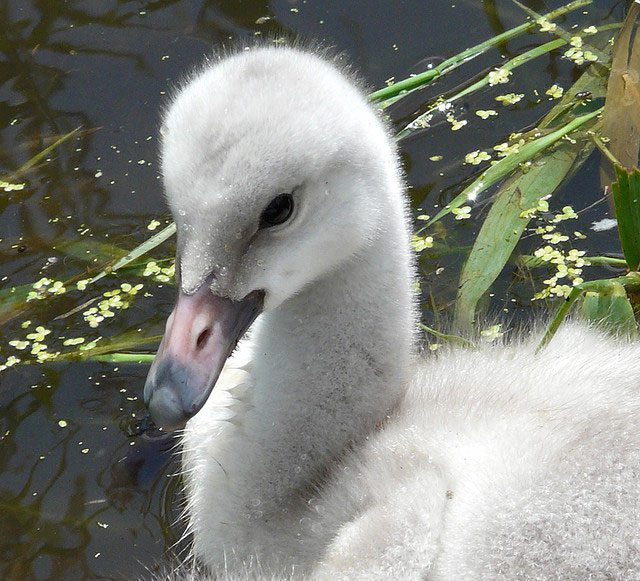Trumpeter Swan populations
Across North America wildlife managers have divided Trumpeter Swans into three main management areas: Pacific Coast Population (PCP), Rocky Mountain Population (RMP) and Interior Population. Washington State has both the PCP and RMP areas. Western Washington is the PCP and eastern Washington is the RMP. They are divided by where they breed as well as their wintering area.
The map shows these management divisions for Trumpeter Swans in North America.
The Cascade Mountain range in Washington and Oregon forms a major geographic dividing line for both wintering and breeding Trumpeters. West of the mountains is the coastal zone which is primarily temperate and much wetter than the eastside. East of the mountains has drier, hotter summers and much colder winters. Trumpeter Swans rarely intermingle on either the wintering or breeding grounds.
As you can see from the mapped areas in gray, there is some overlap between these populations around the northern British Columbia and southern Yukon Territory. A major geographic dividing line is the Yukon River near Whitehorse, Yukon Territory, Canada. Read more about each population:

Download the N.A. Trumpeter Swan Survey
Rocky Mountain Population
The Rocky Mountain Population (RMP) refers to those swans that winter in eastern Washington, and primarily breed in central and eastern Yukon, Northwest Territory, northeastern British Columbia, Alberta and perhaps as far east as southwest Saskatchewan. The only recent nesting location in Washington is at Turnbull National Wildlife Refuge south of Spokane.
Trumpeters migrate through in both fall and spring, primarily along a corridor that encompasses the area from the eastern foothills of the Cascade Mountains west through the Methow Valley into the Okanagon area and the wide path it creates moving south. Reports of wintering Trumpeter swans have come from the Washington/Canada border lakes/ponds to Cle Elum, Yakima and Walla Walla and points in between.
We will be adding new information on eastern Washington Trumpeter Swans as it becomes available.
Turnbull National Wildlife Refuge
Trumpeter Swan history at Turnbull National Wildlife Refuge: By the late 1950’s trumpeter swans were nearly extinct in the lower 48 states as a result of overhunting and loss of habitat. The largest remaining population of nesting birds occurred on Red Rock Lakes National Wildlife Refuge in Montana. Birds from this flock were relocated to several areas in the west that historically supported swans. Turnbull National Wildlife Refuge was one of the reintroduction sites for trumpeter swans in the 1960’s. From the original introduction of 33 cygnets that took place over 3 years (1963, 1965, and 1966), the refuge population stayed relatively stable through 1976 with spring populations between 27 and 29 birds. Nesting peaked in 1970 with 8 nests. This is the first year that all introduced birds reached breeding age. Peak recruitment occurred in 1975 with 14 cygnets fledged. It was the belief of Jim Reese, refuge biologist in the late seventies, that none of the swans hatched on the refuge returned to breed and that all breeding that occurred was accomplished by the original introduced cygnets.
In 1976, the supplemental feeding and pond aeration program that began in 1968 was discontinued. This program had effectively created a resident flock with no migration behavior. The resulting dispersal of individuals that first winter and a severe drought the following year, resulted in a precipitous decline in the refuge population indicating that wintering habitat in the area is severely limiting. Several birds, mostly juveniles, failed to return at all and were never accounted for by band returns or other observation. Major causes of mortality were shooting, power line collisions, and predation.
Observers noted that for 22 years through 2009, only one trumpeter swan reliably returned to Turnbull National Wildlife Refuge each winter or spring — whenever enough open water was exposed by ice thawing at the headquarters-area ponds.
This bird became known as Solo, a lone male Trumpeter. Finally, he found love in 2009 and his legacy now lives on in at least 13 swans (as of 2013) and counting. Since then two pairs nested and in 2015 only one pair nested successfully. Sadly, Solo died in 2011, likely of lead poisoning from either a lead fishing sinker or lead shot. Solo may have opened the door for the restoration of trumpeters at Turnbull with his efforts in his two successful breeding years. His legacy appears to be continuing with the swans that reside and nest there today.
During the 2019 Christmas Bird Count 13 Trumpeters were counted in the Turnbull NWR area.
In the 2020 nesting season on the refuge, there was one successful pair that nested and hatched 2 cygnets that survived and fledged. There appeared to be two additional pairs on separate wetlands, but they did not attempt to nest. One of the non-nesting pairs was accompanied by a third individual, likely a sub-adult.
For more information on the current status of Trumpeter Swans at Turnbull NWR and more about Solo click here. If you plan to visit the area, nesting swans are likely to be found in the late spring through summer months. Broods usually hatch around mid to late June.








